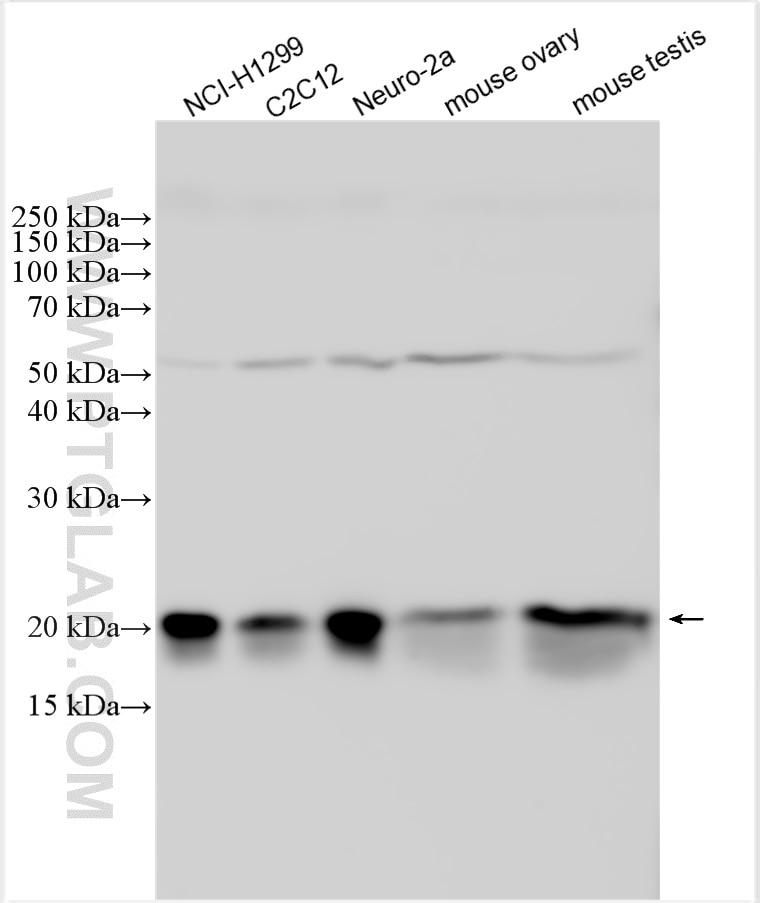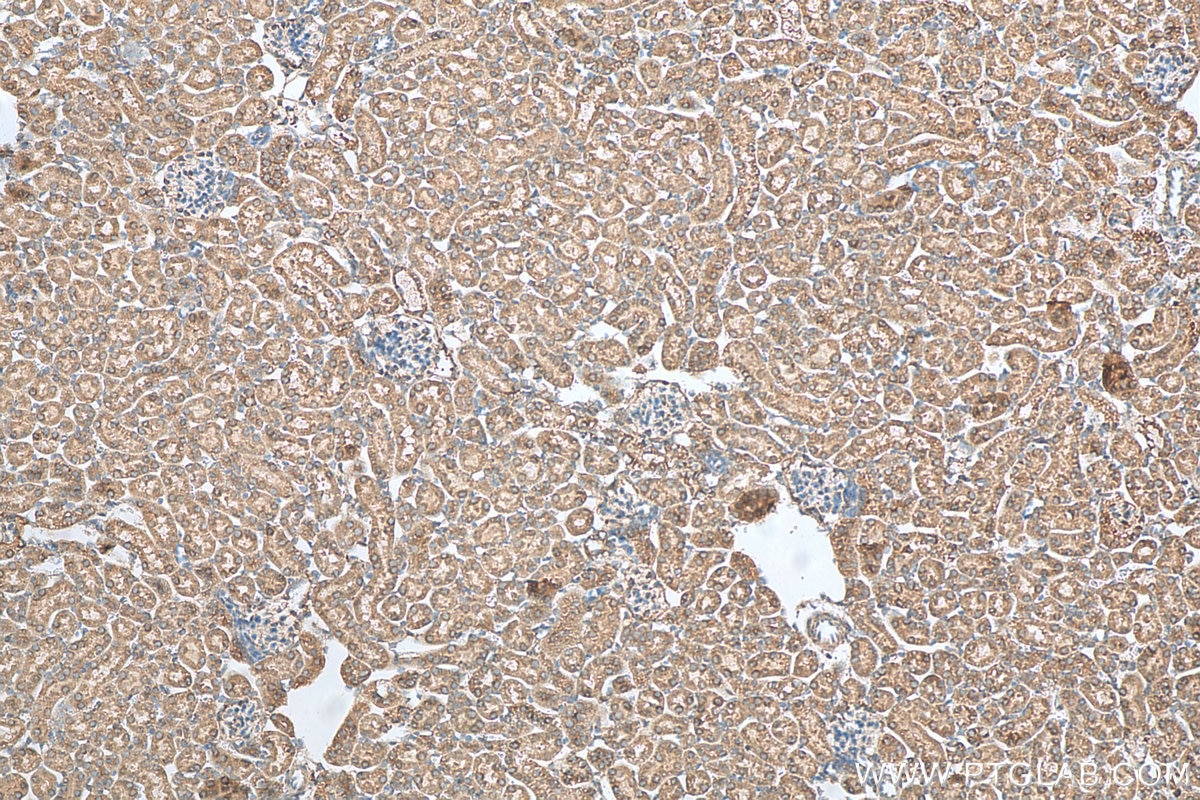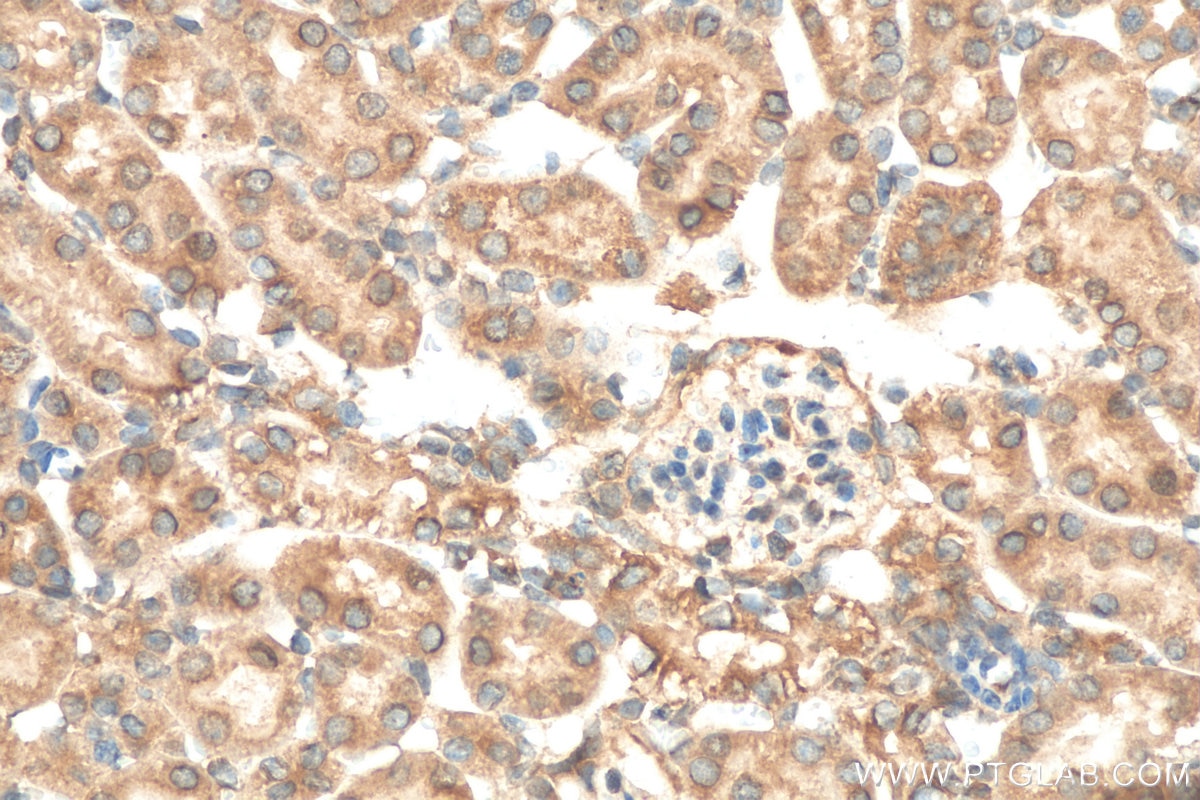Tested Applications
| Positive WB detected in | NCI-H1299 cells, C2C12 cells, Neuro-2a cells, mouse ovary tissue, mouse testis tissue |
| Positive IHC detected in | mouse kidney tissue Note: suggested antigen retrieval with TE buffer pH 9.0; (*) Alternatively, antigen retrieval may be performed with citrate buffer pH 6.0 |
Recommended dilution
| Application | Dilution |
|---|---|
| Western Blot (WB) | WB : 1:2000-1:6000 |
| Immunohistochemistry (IHC) | IHC : 1:50-1:500 |
| It is recommended that this reagent should be titrated in each testing system to obtain optimal results. | |
| Sample-dependent, Check data in validation data gallery. | |
Published Applications
| WB | See 1 publications below |
Product Information
15811-1-AP targets Centrin 3 in WB, IHC, ELISA applications and shows reactivity with human, mouse samples.
| Tested Reactivity | human, mouse |
| Cited Reactivity | human |
| Host / Isotype | Rabbit / IgG |
| Class | Polyclonal |
| Type | Antibody |
| Immunogen | Centrin 3 fusion protein Ag8547 Predict reactive species |
| Full Name | centrin, EF-hand protein, 3 (CDC31 homolog, yeast) |
| Calculated Molecular Weight | 167 aa, 20 kDa |
| Observed Molecular Weight | 23 kDa |
| GenBank Accession Number | BC005383 |
| Gene Symbol | Centrin 3 |
| Gene ID (NCBI) | 1070 |
| RRID | AB_2082361 |
| Conjugate | Unconjugated |
| Form | Liquid |
| Purification Method | Antigen affinity purification |
| UNIPROT ID | O15182 |
| Storage Buffer | PBS with 0.02% sodium azide and 50% glycerol , pH 7.3 |
| Storage Conditions | Store at -20°C. Stable for one year after shipment. Aliquoting is unnecessary for -20oC storage. 20ul sizes contain 0.1% BSA. |
Protocols
| Product Specific Protocols | |
|---|---|
| WB protocol for Centrin 3 antibody 15811-1-AP | Download protocol |
| IHC protocol for Centrin 3 antibody 15811-1-AP | Download protocol |
| Standard Protocols | |
|---|---|
| Click here to view our Standard Protocols |
Publications
| Species | Application | Title |
|---|---|---|
EMBO Rep Zika virus alters centrosome organization to suppress the innate immune response. |







